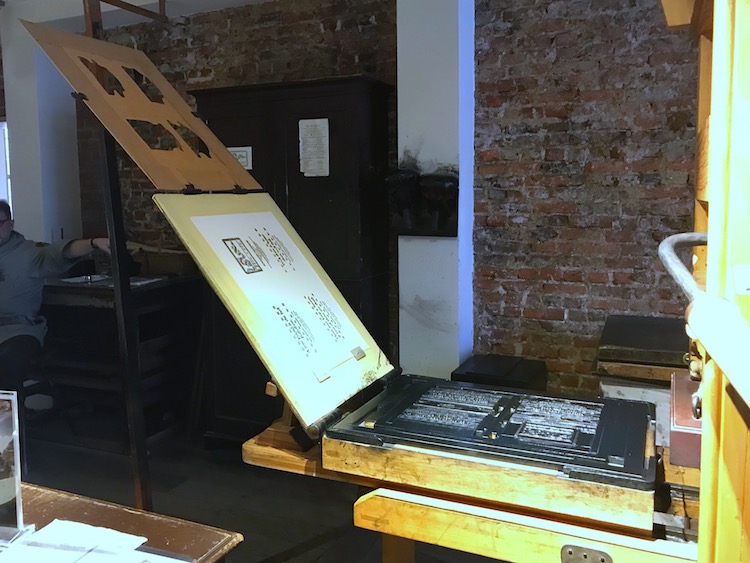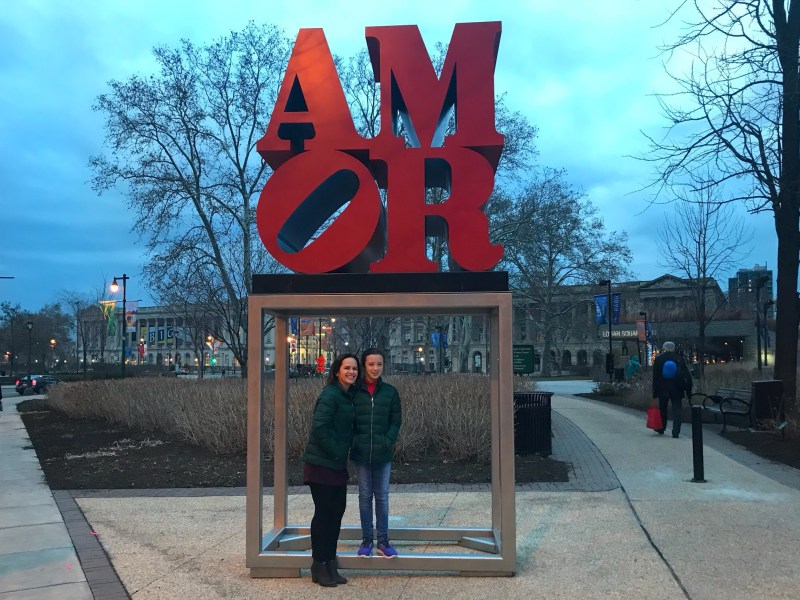After visiting Philadelphia for the first time, we realized two things. One, it is a city of contrasts: history sits beside innovation, and modern skyscrapers stand by centennial buildings that record hundreds of years of history. And two, there is no shortage of potential activities.
Besides being the union’s first capital, Philadelphia claims to be the land of ‘firsts’ because relevant historical events and important inventions that helped to shape our nation took place there. Having a fifth grader at home, we certainly packed our day visiting the preserved buildings, sites, and museums that brought American history to life. She loved it, and so did we!
However, Philly isn’t stuck in the past by any means. Whether exploring the deep historical roots that reach back to the founding of the world’s oldest democracy, or enjoying the lifestyle of a buzzing metropolis, we were delighted by all the city had to offer.
While visiting family on the East Coast, we planned a day trip to The City of Brotherly Love. Time was tight, so after picking and choosing, here are some tips and ideas based on how we spent our day touring this remarkable city.
Understanding the Independence National Historical Park
Philadelphia joined UNESCO World Heritage Cities in 2015. The city accomplished this mark due to the rich collection of historic buildings located throughout the city. The Independence National Historical Park alone hosts more than two dozen. Independence Hall—one of the most important buildings in our country, plus Liberty Bell, Congress Hall, Franklin Court, and the Graff House are only a few of them.
Many of these sites are free.
What you need to know
Many of the historical sites are within walking distance, so upon arrival, I suggest you park in the underground garage located directly below the Independence Visitor Center.
Before anything else, walk to the Visitor Center, the only place to get the timed tickets required to enter Independence Hall. There is no charge for those tickets, but there is a limited quantity available each day. They are required only from March to December, but the Hall is open year round.
To reserve tickets in advance, visit recreation.gov.
Security screening will happen at most of the buildings located on the Independence National Historical Park. Travel light when possible, and arrive early. Facing December’s cold weather, we bundled up with jackets, scarves, hats, and gloves, which all had to be removed every time we went through security. Eventually, we gave up on some of them.
9:30 AM – Liberty Bell Center
We booked our tickets to enter the Independence Hall for 10am. Having time to spare, we started our historical tour at one of the most significant symbols of American Independence—the Liberty Bell.
Because it was early, there were no lines. While walking towards the Bell, we checked the educational exhibit where pictures, documents, and a video revealed the rich history behind this relic. Cast in England in 1751 to adorn the State House, now called Independence Hall, the bell cracked after only a few years. Re-cast twice, it served as the official bell to alert the Pennsylvania Assembly to meetings and announcements. Later, abolitionists, Women’s Suffrage Movement activists, and Civil Rights advocates were all inspired by the inscription it bears, “Proclaim Liberty Throughout All the Land Unto All the Inhabitants Thereof.”

At the end of this interesting exhibition stands the majestic bell. Just being in the presence of this powerful symbol of independence and freedom was inspiring to us as well!
10:00 AM – Independence Hall
At Independence Hall we were greeted by a park ranger who led us into the main building. Welcomed by another ranger, we moved through the building while she expertly engaged kids and adults alike sharing the history of each room.

The Assembly Room was the highlight. Including the “Rising Sun” armchair used by George Washington during the Federal Convention sessions, the room was set up as it was in the 18th century. Looking into the realistic arrangement of this place was mind-blowing. We were standing where the Founding Fathers discussed and signed the Declaration of Independence, and where eleven years later, state representatives met to mold the United States Constitution.

Note: The tour lasts about 40 minutes.
11:15 AM – Franklin Court
The Franklin Court is where Benjamin Franklin’s residence used to stand. Today, it holds a steel skeleton in its place, and parts of the original building. Close by are the Benjamin Franklin Museum, Printing Press, and Post Office.

Benjamin Franklin Museum
Besides being the most notable citizen of Philadelphia, Mr. Franklin had a significant and profound influence on the early development of the nation. All of his contributions to science, technology, and both political and social development are shown through videos, interactive displays, documents, and artifacts in this small, but impressive museum.
Open daily from 9am to 5pm.
$5.00 for adults
$2.00 for children, ages 4 through 16
Ben Franklin Printing Press
The Printing Press was our daughter’s favorite place in Franklin Court, and we were pretty impressed as well. Step by step, the park ranger gave a live demonstration of the printing press that Benjamin Franklin would have used in the 1700s. He told us that fabric was used instead of paper, and explained how it was inked and pressed using leather daubers, then hung on racks along the ceiling to dry. At the end of the process, the paper of the day was ready.

Benjamin Franklin Post Office
During early colonial times there were no post offices. We stepped into the site where Benjamin Franklin, as the first postmaster general, established the postal system. During a quick stop, we checked the still fully functional post office displaying historic artifacts from that era.
1:00 PM – Lunch at Amada Restaurant
Philly has a phenomenal food scene. Because we are fans of tapas-style restaurants and it was highly recommended by my sister-in-law, we chose Amada Restaurant for lunch. We were not disappointed.

Trying different dishes, we started with aged manchego cheese with truffle honey and a glass of espumoso. Followed by roasted cauliflower, Croquetas de Jamon, and a flatbread, we understood why this place is her favorite restaurant in the city. Everything was delicious, the service was great, and the restaurant just had a really nice atmosphere.
Betsy Ross House
Our daughter absolutely loved to learn about Betsy’s brave life. A friendly personage of Betsy was sitting in her own living room while folding laundry and answering questions about herself. It was thrilling to learn about the courage, strength and diligence Betsy Ross displayed throughout the Revolutionary War. Although making flags for a new nation was a dangerous job, Betsy Ross secretly designed and sewed the first American Flag out of her humble shop, despite the fact that she could have been sent to prison if discovered by British soldiers.


Open daily between March and November (on Tuesdays and Sundays between December and February) from 10am to 5pm.
$5.00 for adults
$4.00 for children
$2.00 audio tour
3:15PM – Elfreth’s Alley
A short walk from Betsy’s House led us to Elfreth’s Alley. We estimated it would be a quick stop to look at the façades of the houses and snap some pictures, but it didn’t happen exactly the way we expected. We got there pretty quickly, but when we arrived, there was a bride having a photoshoot. Then, one more. And still another. After standing there for a while, we sneaked in between sessions to take a couple quick pictures and left.
Elfreth’s Alley is the nation’s oldest residential street. The charming houses date back to the 18th century, when most businesses were home-based. The first floor of each house would be occupied by shoemakers, tailors, or other occupations, while the families would live upstairs.

This lovely cobblestone street with brick houses, bright cheerful colors, and quaint street lanterns has been preserved over the centuries and gave us the feeling that we were walking through the past.
3:45PM – Graff’s (Declaration) House
Our last historic site of the day was the Graff’s House, but it was closed, and we could only check it out from outside.

According to my research, when Thomas Jefferson was asked to write a declaration of independence from Great Britain, he wished to live in a place that would provide him space he needed for his task, and distance from the city. To that end, he rented two furnished rooms at Jacob Graff’s house, which back then was actually on the outskirts of town.
Note: The original structure was torn down in 1883. The National Park Service built a faithful replica of the original building in 1975.
4:15PM – Reading Terminal Market
With enough history for the day, we walked back to our car. We were hungry, so we added another stop before leaving Philly—the Reading Terminal Market.

Strolling along the aisles, we wanted to get an idea of what the place had to offer. This bustling indoor market hosts a vast array of vendors selling everything from coffee to chocolates, cheeses, flowers, baked goods, fresh produce, meats, seafood, and more. It also offers a good selection of restaurants conveniently located around a common seating area. The market was lively and cheerful.

Our first stop was Valley Shepard Creamery. There, we not only enjoyed a savory grilled cheese sandwich, but also bought a fresh handmade piece of manchego. Making a few more stops, we walked out with a sampler of coffee from around the world (Brazil, Colombia, and Ethiopia), a small vase of truffle honey (yes, we wanted to reproduce the dish we had at Amada), and chocolates.
5:30PM – AMOR Sculpture and Boathouse Row
We had nothing else on our agenda. Intentionally getting lost in the city, we drove alongside the thousands of cars circulating during the rush hour. The sun was already setting behind buildings, when we accidentally spotted the AMOR sculpture. While my husband drove around, since there was no parking to be found, my daughter and I ran to take a quick picture of this bilingual version of the LOVE sculpture.

The day was over. Back in the car, we drove along the Schuylkill River to admire the peaceful beauty of Boathouse Row. With the beautiful view of shining lights from the boathouses reflecting on the surface of the river, we said good-bye to Philly.

How to Prepare
Before any trip, I normally ask my daughter to research the place we are visiting. I find she gets more engaged about each destination if she knows something about it, especially if there is an educational component involved.
Philadelphia wasn’t any different, plus she already had some knowledge from school and books she had read in the past. All of that helped her to understand the history behind the buildings and sites we visited.
Easy to read, here are some of the books:






